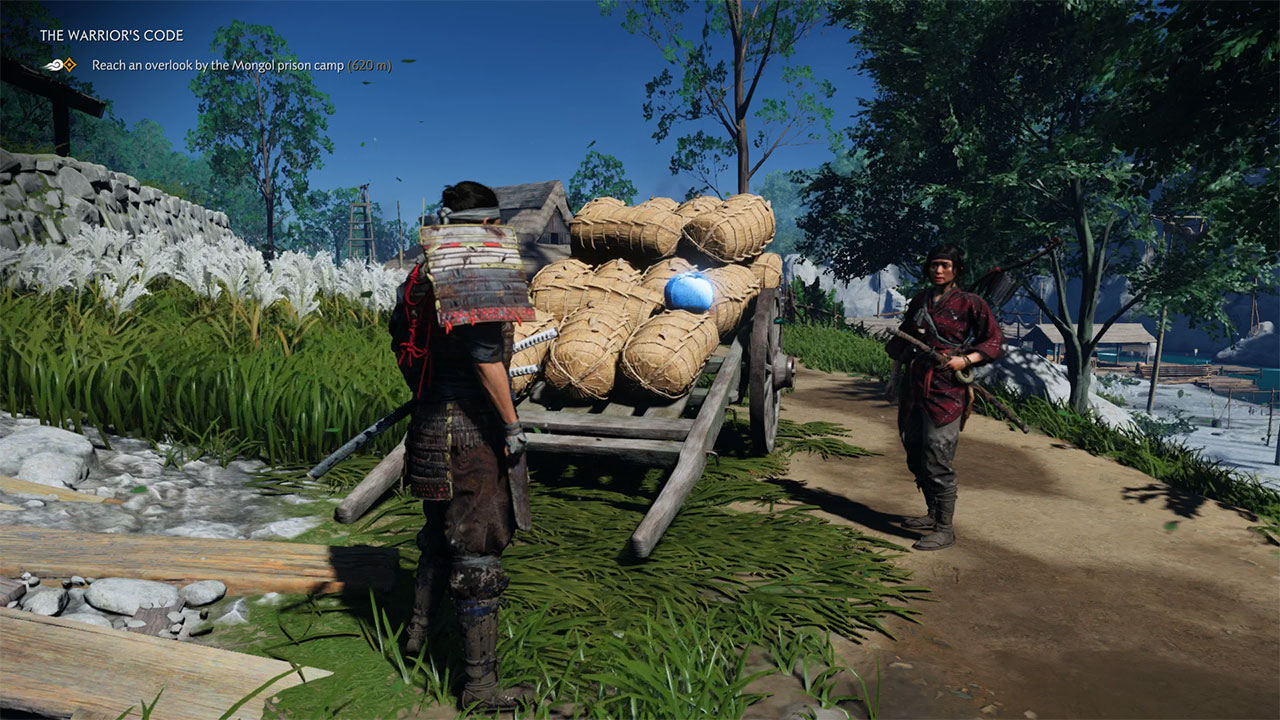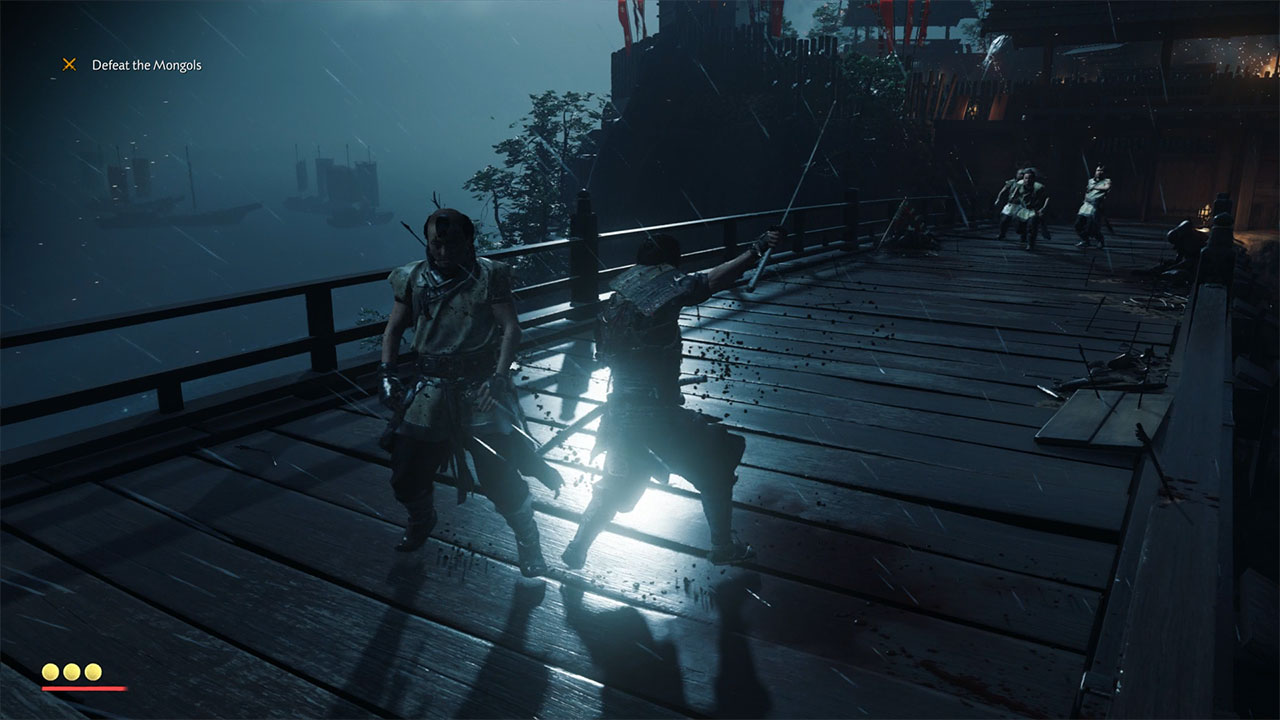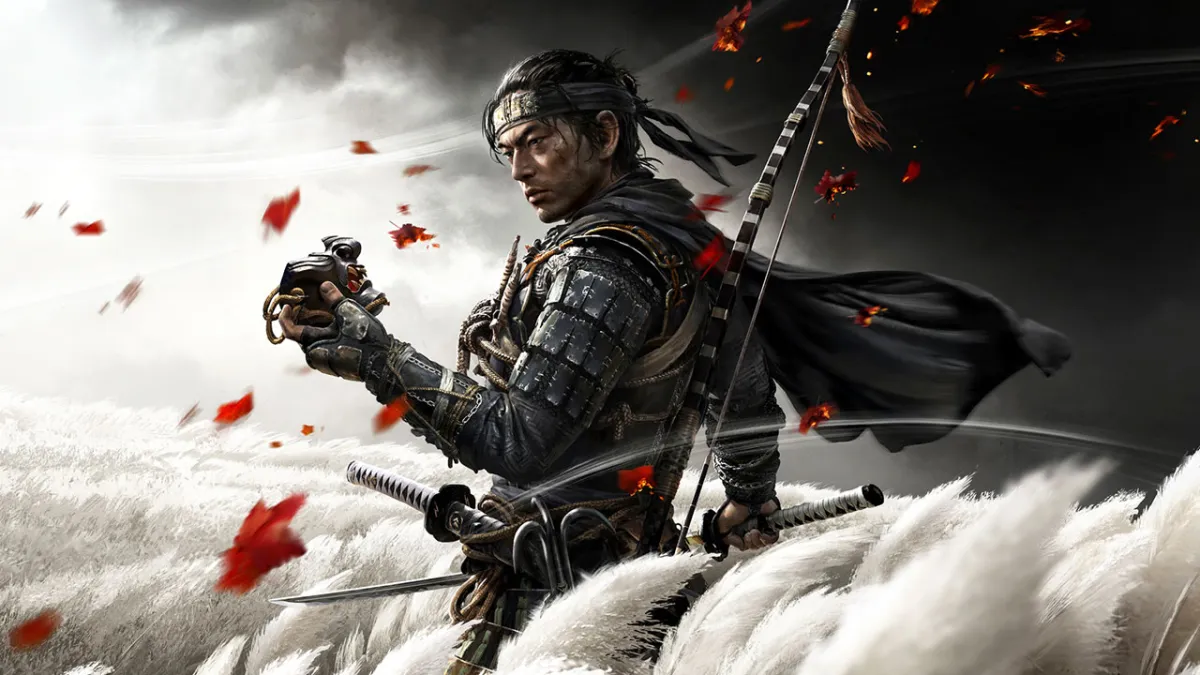It’s hard to believe that Sucker Punch stayed so quiet for the better part of the current console generation. Yes, it really has been over six years since the initial release of Infamous: Second Son. And now, with just months to go until a new set of video game consoles arrive, they’ve released one of their best exclusives to date with Ghost of Tsushima. A big, beautiful, open-world game — Ghost of Tsushima is both similar to the studio’s previous work in the size and scope of the game, while also being tonally different when it comes to story telling. There hasn’t been anything quite like Ghost of Tsushima to date, and Sucker Punch pulls off the period piece that whisks players to 13th century Japan where the Samurai of Tsushima face off against the first Mongol invaders.
Everything you expect from open world games and some things that you don’t
In Ghost of Tsushima players assume the role of Jin Sakai. The nephew of a samurai leader, the son of a slain warrior, and the assumed last samurai standing after the Mongols invade Tsushima island. As the story churns, Sucker Punch gives players a deep look at Japan in this time period, as well as the interpersonal relationships of Jin — all the while allowing them to systematically expel the Mongols from these lands and ultimately kill the Khan. The story bounces between themes of revenge, regret, friendships lost, and internal conflicts stemming from adhering to the ways of the Samurai and upholding the Shogun’s rules. While Jin Sakai is a fictional character, the developers give players the full authentic experience, the likes of which we’ve only seen from Ubisoft with their historic deep dives offered in the Assassin’s Creed series. A bit more palatable than those recent games that are bursting at the seams with filler, Ghost of Tsushima is a more concise experience, while still offering players plenty of freedom to explore, collect items, and improve their character through upgrades.

The core of the game is centered around the combat and stealth sequences. Neither of which are implemented in ways that are revelations for the genre. Whether on story missions, side missions, or free-roaming the country side looking for Mongol camps to overthrow, combat in itself is a mixed bag. At times it can feel incredibly fluid and fun. While at others it can feel antiquated and lacking. The system itself is built around stances, which need to be used for better effectiveness against certain types of enemies. Enemies come in standard varieties, big brutes, shielded, swordsman and more. Each have specific weakness to a fighting style and your job is to recognize and switch into these stances as necessary. All the while, recognizing whether an enemy is attacking you with a blockable or non-blockable attack which you can either block, dodge, or parry. The combat can be fun at times, especially when successfully integrating in the long range attacks from the bow and arrow or other projectile weapons, environmental hazards, and more. Each fight can play out in a number of different ways depending on what weapons you use, which power-ups you have equipped, and how you choose to tackle a situation. The most frustrating thing about it will likely be the lack of lock-on system, which can be pretty problematic when fighting large groups of enemies. Trying to target specific enemies can be a chore and without a lock-on system you can find yourself flailing away quite often. As for the aforementioned stealth sequences, these are offered as non-passable story events, but stealth is also a viable option for infiltrating any Mongol stronghold. Though it stealth in itself is not a part of the Samurai code of honor.
Combat and stealth aren’t a revelation but get the job done
While combat and stealth might not be a revelation, the organic nature in the way the world of Ghost of Tsushima is presented to the player does feel like it. Long have open world games relied on waypoints and markers to push players towards their goals, and Ghost of Tsushima does this as well, though through different means. Instead of the traditional waypoint systems that we’ve seen in other open world games, Sucker Punch uses a more natural visual device to light your path. Like other games you can set your waypoints on an overworld map, but the way to them is highlighted by using a visual depiction of the wind. These white gusts of wind will show you the direction that you need to head to get to your destination. This more organic waypoint method does make the game world unfold to you in a more natural way. Plus it’s just pretty to watch — flower petals and vegetation blowing in the wind, sweeping across the rolling hills of Japan can certainly be enchanting. It’s clear that this was a focal point for the developers because it also applies to other aspects of the game — like liberating the Mongol controlled areas of Tsushima. On the map these are red icons, but in the game world these are represented by plumes of smoke in the distance and smoldering buildings on the horizon. Most of the land mass of Tsushima will be uncovered through your natural progression, and you’ll have plenty of moments that have you trekking through your beautiful homeland through vibrant fields filled with flowers, bamboo, and wildlife, OR, rushing towards the fire and smoke to expel the Mongols from another held territory.

While the general trend of these big-budget open world games has been to throw so much at the player to overwhelm and give the impression of a massive amount of in-game content, Ghost of Tsushima doesn’t ever quite feel like this. Whether looking at side missions, main path content, or optional free-roam activities or mini-games, there’s just enough of each to make it feel like a complete and fulfilling package. That said, there never really feels like there’s a huge weight hanging around your neck, consisting of boring activities awaiting you in the future. That’s not to say that Ghost of Tsushima doesn’t have its own moments of monotonous content, because it does.
The systems in place give the game a more organic feel
There are plenty of follow the NPC here to complete a mission, or retreaded gameplay ideas (turret sequences) that we’ve seen in countless games, the point is that it’s not as overwhelming as other open world games and it feels more approachable than most recent comparables. Even in the crafting and upgrades section which tasks you with scavenging supplies and items from around the world, it always feels like your next upgrades are within reach, and not much mindless scouring for items will be necessary to get there. That said, the entire package can still feel a little bit repetitive at times, but there’s just enough difference in sequences that take you away from the core combat game loop to make the game feel fresh, without being artificially extended. To wrap that all together, Ghost of Tsushima is also well organized in its menus and interface to help you wrangle with the many systems here. From upgrade points and available weapons and gear upgrades, everything feels like its at your fingertips, with helping tooltips to let you know what you might be missing.
Ghost of Tsushima ultimately feels like a masterclass in open world game design. Sucker Punch bucks modern trends to make a game that feels both massive and palatable, proving that there are still smart ways to refine a genre that’s been recently defined by sheer wealth of content. It’s a beautiful game, in a setting that hasn’t been touched all that much and features gameplay systems that ultimately feel like they just get the job done, rather than reinvent anything worthwhile. Ghost of Tsushima is a must-play for fans of many types of games, with a wealth of options for any type of player.
The Verdict
Ghost of Tsushima is a masterclass on how to make an open world feel palatable and focused while still offering the rewarding progression necessary to make it all come together. A mixture of traditional swordfighting combat and stealth sequences meld well with the beautiful, organically unfolding island of Tsushima and come together to form one of the best open world action games of the year.











Published: Jul 14, 2020 09:00 am